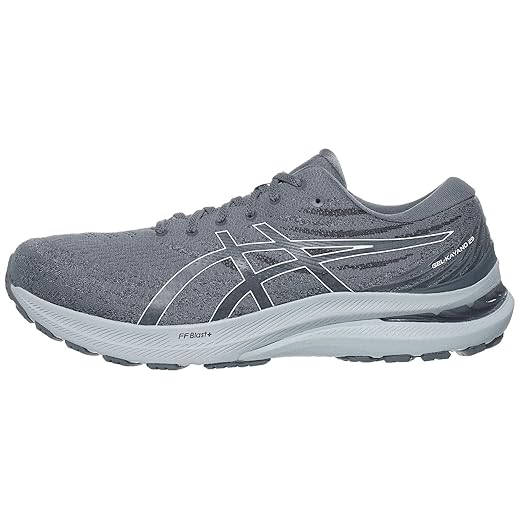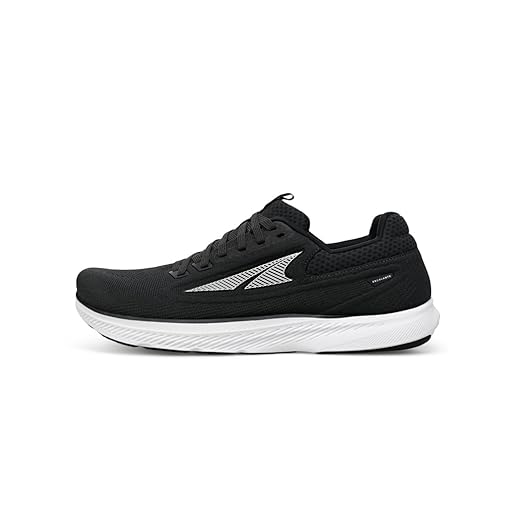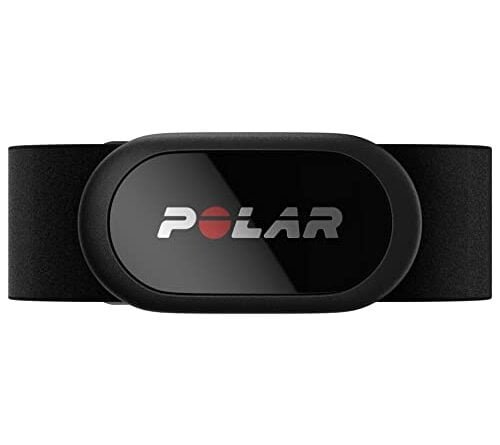
Hey there! Are you someone who loves lacing up your running shoes and hitting the pavement? If so, you’ve probably heard all the hype about minimalist running shoes and how they’re supposed to be the ultimate game-changer. But, before you ditch your trusty old pair of traditional running shoes, let’s dive into the world of running shoes and explore whether minimalist shoes are actually better. In this post, we’ll take a closer look at the pros and cons of both minimalist and traditional running shoes, helping you make an informed decision on which type of shoe is best suited for your running style. So lace up and let’s get started!
Kick-start your running journey with these top-selling shoes!



What are minimalist running shoes?
If you’re a runner or have been researching running shoes, you may have come across the term “minimalist running shoes.” But what exactly are they, and how do they differ from traditional running shoes? In this blog section, we’ll delve into the features of minimalist running shoes, such as their low heel-to-toe drop, lightweight design, and minimal cushioning.



Low Heel-to-Toe Drop
One of the key features that sets minimalist running shoes apart from traditional ones is the low heel-to-toe drop. In traditional running shoes, you’ll often find a significant height difference between the heel and the toe. This design aims to provide cushioning and support, especially for runners with a heel-striking gait.
Minimalist running shoes, on the other hand, have a minimal or zero-drop design, meaning there is little to no height difference between the heel and the toe. This design encourages a more natural foot strike, with the foot landing closer to a neutral position. By promoting a midfoot or forefoot strike, minimalist running shoes can help runners improve their running form and potentially reduce the risk of certain injuries.
Benefits of a Low Heel-to-Toe Drop:
- Promotes a more natural and efficient running form.
- Encourages midfoot or forefoot strike, potentially reducing strain on the joints.
- Allows for better proprioception and foot strength development.
Lightweight Design
Another characteristic of minimalist running shoes is their lightweight design. These shoes are often made with lightweight materials, such as breathable mesh uppers and flexible soles. The goal is to provide a shoe that feels almost like a second skin, allowing for a more natural and unrestricted movement.
By reducing the weight of the shoe, minimalist running shoes aim to minimize the effort required to lift the foot and improve running efficiency. This lightweight design can be particularly beneficial for long-distance runners who want to conserve energy and reduce fatigue.
Benefits of a Lightweight Design:
- Enhances running efficiency and reduces energy expenditure.
- Provides a more natural and unrestricted running experience.
- Reduces fatigue, especially during long-distance runs.
Minimal Cushioning
Unlike traditional running shoes that often feature thick cushioning materials, minimalist running shoes have minimal cushioning. The idea behind this design is to allow the foot to have a closer connection to the ground, providing a more natural and responsive feel.
Minimal cushioning encourages the foot to absorb impact forces more efficiently and strengthens the muscles in the feet and lower legs. However, it’s important to note that transitioning to minimalist running shoes requires a gradual adaptation period to allow the body to adjust to the reduced cushioning and support.
Benefits of Minimal Cushioning:
- Encourages a more natural and responsive running experience.
- Promotes efficient impact absorption and strengthens foot and lower leg muscles.
- Can potentially improve balance and stability.
Advantages of minimalist running shoes
When it comes to running shoes, minimalist options have gained significant popularity in recent years. These shoes are designed to provide a more natural running experience while offering a range of benefits for runners. In this blog post, we will explore the advantages of minimalist running shoes, including their ability to promote a more natural running form, strengthen foot and leg muscles, and potentially reduce the risk of certain running-related injuries.



Promoting a More Natural Running Form
One of the key advantages of minimalist running shoes is their ability to encourage a more natural running form. Unlike traditional running shoes with thick cushioning and elevated heels, minimalist shoes are designed to mimic the sensation of running barefoot. By allowing your feet to feel the ground beneath them, these shoes promote a midfoot or forefoot strike, as opposed to a heel strike.
- Minimalist shoes typically have a lower heel-to-toe drop, which encourages a more neutral foot strike.
- The absence of excessive cushioning forces the body to absorb shock more efficiently, reducing the impact on joints.
- By promoting a midfoot or forefoot strike, minimalist shoes can help distribute forces more evenly throughout the foot, reducing the strain on specific areas.
Strengthening Foot and Leg Muscles
Another benefit of minimalist running shoes is their potential to strengthen foot and leg muscles. When running in traditional shoes, the cushioning and support provided can actually weaken these muscles over time. Minimalist shoes, on the other hand, require the muscles in your feet and legs to work more actively, resulting in increased strength and stability.
- The minimal cushioning forces your foot and leg muscles to engage more, leading to improved strength and stability.
- With stronger muscles, you may experience better overall performance and reduced fatigue during runs.
- The need for increased muscle activation can also lead to better proprioception, or the body’s awareness of its position and movement in space.
Reducing the Risk of Running-Related Injuries
Minimalist running shoes have been touted as a way to potentially reduce the risk of certain running-related injuries. While individual results may vary, here are some factors that contribute to their injury-reducing potential:
- By promoting a more natural running form, minimalist shoes can help reduce the strain on joints, potentially lowering the risk of knee and hip injuries.
- The increased muscle strength and stability gained from using minimalist shoes may help prevent overuse injuries such as plantar fasciitis or Achilles tendinitis.
- Minimalist shoes often have a wider toe box, allowing your toes to splay naturally and reducing the risk of conditions like bunions or Morton’s neuroma.
Brands and Models to Consider
If you’re interested in trying minimalist running shoes, here are a few popular brands and models worth considering:
- Nike Free RN Flyknit: These shoes offer a flexible and lightweight design, allowing for natural foot movement.
- Merrell Vapor Glove 4: Known for their barefoot-like feel, these shoes provide excellent ground feedback and traction.
- Vibram FiveFingers V-Run: These unique shoes feature separate toe compartments, mimicking the sensation of running barefoot.
In conclusion, minimalist running shoes offer several advantages for runners. They promote a natural running form, strengthen foot and leg muscles, and potentially reduce the risk of certain running-related injuries. Whether you’re a seasoned runner looking to improve your performance or someone new to running, exploring minimalist shoes may be a worthwhile endeavor. Don’t forget to consult with a professional if you have any specific concerns or questions about transitioning to minimalist footwear. Happy running!
Advantages of Traditional Running Shoes
When it comes to choosing the right running shoes, the options seem endless. From minimalist shoes to maximalist shoes, the market is flooded with a variety of choices. However, traditional running shoes still hold their ground and offer several advantages that shouldn’t be overlooked. In this article, we delve into the benefits of traditional running shoes and why they might be the perfect fit for you.
Increased Cushioning for Enhanced Comfort
One of the key advantages of traditional running shoes is the increased cushioning they provide. Designed with ample padding in the midsole and heel areas, these shoes offer superior shock absorption. Whether you’re a seasoned runner or just starting your fitness journey, the added cushioning can help reduce the impact on your joints and minimize the risk of injuries.
Real-life example: The Nike Air Zoom Pegasus 37 is a popular traditional running shoe that boasts exceptional cushioning. Its Zoom Air unit in the forefoot and Nike React foam in the midsole provide a responsive and comfortable running experience.
Stability for Optimal Support
Runners with specific needs or conditions often require additional stability in their shoes. Traditional running shoes excel in this aspect, offering features that promote stability and support. These shoes typically have wider outsoles and firmer midsoles, ensuring a secure and balanced stride.
Real-life example: The Brooks Adrenaline GTS 21 is a reliable traditional running shoe known for its stability. It features a GuideRails support system that keeps your feet in line and prevents excessive movement, which is particularly beneficial for runners with overpronation.
Versatility for Various Running Surfaces
Whether you prefer road running or hitting the trails, traditional running shoes are versatile enough to handle different types of surfaces. With a balanced combination of cushioning and traction, these shoes provide a smooth and comfortable ride across various terrains.
Real-life example: The Salomon Speedcross 5 is a popular traditional running shoe that excels on rugged trails. Its aggressive lug pattern and durable outsole offer excellent grip and stability, ensuring you stay on your feet even on slippery surfaces.
Durability for Long-lasting Performance
Investing in a pair of running shoes is an investment in your running journey. Traditional running shoes are known for their durability, thanks to the use of sturdy materials and reinforced construction. With proper care, these shoes can withstand the rigors of regular use, providing you with long-lasting performance.
Real-life example: The ASICS Gel-Kayano 27 is a traditional running shoe renowned for its durability. Its sturdy upper, high-density foam midsole, and durable outsole make it a reliable companion for long-distance runners.
Factors to consider when choosing between minimalist and traditional running shoes
When it comes to running shoes, there are two main categories to choose from: minimalist and traditional. Both options have their own set of benefits and considerations, so it’s important to weigh these factors before making a decision. In this article, we will delve into the various factors individuals should consider when deciding between minimalist and traditional running shoes.
Running Experience
Your level of running experience plays a crucial role in determining the type of shoe that will suit you best. Consider the following:
- Beginner Runners: If you are new to running or have just started a running program, traditional running shoes may be a safer choice. They provide more cushioning and support, which can help reduce the risk of injuries as your body adjusts to the demands of running.
- Experienced Runners: Those with a solid running foundation may benefit from minimalist shoes. These shoes tend to have a lower heel-to-toe drop and less cushioning, allowing for a more natural running motion. However, it’s important to gradually transition to minimalist shoes to avoid overloading your muscles and connective tissues.
Foot Type
Understanding your foot type is essential when choosing the right running shoe. Consider the following:
- High Arches: If you have high arches, traditional running shoes with ample cushioning are generally recommended. This helps to absorb shock and provide stability.
- Flat Feet: Flat-footed individuals may benefit from minimalist shoes, as they promote a more natural foot movement and encourage the development of foot strength. However, if you have flat feet and experience overpronation (excessive inward rolling of the foot), traditional shoes with stability features may be more suitable.
- Neutral Arches: Runners with neutral arches have a wider range of options. Both minimalist and traditional shoes can work well, depending on personal preference and running style.
Running Goals
Your running goals can also influence the type of shoe you choose. Consider the following:
- Speed and Performance: If your primary goal is to improve your speed and performance, minimalist shoes may be worth considering. These shoes are typically lighter and allow for a more efficient running stride.
- Long-Distance Running: If you are training for a marathon or regularly running long distances, traditional shoes with ample cushioning can help provide the necessary comfort and support to reduce fatigue.
Terrain
The type of terrain you typically run on should also be taken into account. Consider the following:
- Road Running: For those who primarily run on roads or paved surfaces, traditional running shoes are typically the most suitable choice. They offer more cushioning to absorb impact on hard surfaces.
- Trail Running: If you frequently hit the trails, minimalist shoes designed specifically for trail running may be a better option. These shoes often have a more aggressive tread pattern and provide better traction on uneven terrain.
To summarize, choosing between minimalist and traditional running shoes requires careful consideration. By taking into account factors such as running experience, foot type, running goals, and terrain, you can make an informed decision that aligns with your specific needs.
Note: Remember to try on different brands and models to find the shoe that fits you best.
Making the final call: Which shoes are the real winners?
In conclusion, we’ve explored the debate between minimalist running shoes and traditional ones. We’ve discussed the benefits of minimalist shoes in terms of promoting natural foot movement and strengthening muscles. On the other hand, traditional shoes offer more cushioning and support for those with specific needs or preferences.
Ultimately, the choice between minimalist and traditional running shoes depends on your individual needs and preferences. If you prioritize a more natural running experience and want to strengthen your feet and lower limbs, minimalist shoes may be a great option. However, if you require more cushioning or have specific foot conditions, traditional shoes might be more suitable.
It’s important to consider factors such as running style, foot anatomy, and comfort when making your decision. Experiment with different types of shoes and listen to your body to find what works best for you.
In my opinion, the superiority of minimalist running shoes over traditional ones is subjective. Both have their own advantages and it ultimately comes down to personal preference. The most important thing is to find a running shoe that supports your needs and allows you to enjoy your runs to the fullest.







